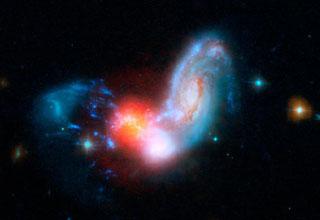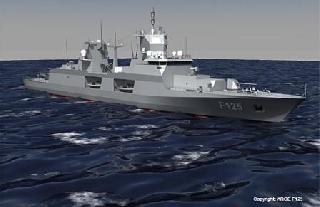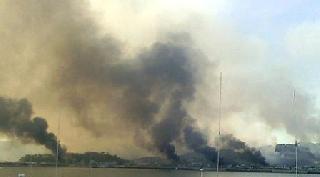
A brilliant burst of star formation is revealed in this image combining observations from NASA's Spitzer and Hubble Space Telescopes. NASA/ JPL
PASADENA (BNS): NASA's Spitzer and Hubble Space Telescopes have revealed images of luminous starburst, the brightest ever seen away from the centers, or nuclei, of merging galaxies.
The collision of two spiral galaxies known as II Zw 096 was visible at shorter wavelengths of light from Hubble (blue hues).
The new findings show that galaxy mergers can pack a real star-making wallop far from the respective galactic centers, where star-forming dust and gases typically pool.
"This discovery proves that merging galaxies can generate powerful starbursts outside of the centers of the parent galaxies," Inami, a graduate student from the Graduate University for Advanced Studies in Japan and the Spitzer Science Center at the California Institute of Technology and first author of a paper detailing the results said.
"The infrared light emission of the starburst dominates its host galaxy and rivals that of the most luminous galaxies we see that are relatively close to our home, the Milky Way,” she added.
Based on Spitzer data, researchers estimate the starburst is cranking out stars at the breakneck pace of around 100 solar masses (100 times the mass of our sun) per year.
In this combined image, Hubble's far-ultraviolet and visible light at wavelengths of 0.15 and 0.44 microns is shown in blue, and near-infrared light at 0.9 microns is cyan. Spitzer's infrared light at 4.5 microns is represented by orange and mid-infrared light at 8.0 and 24 microns is red.
 Previous Article
Previous Article Next Article
Next Article













The Indian Air Force, in its flight trials evaluation report submitted before the Defence Ministry l..
view articleAn insight into the Medium Multi-Role Combat Aircraft competition...
view articleSky enthusiasts can now spot the International Space Station (ISS) commanded by Indian-American astr..
view article